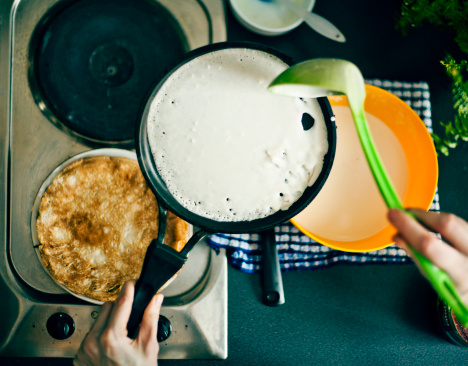Happy Pancake Day! Shrove Tuesday—or more affectionately Pancake Day—is a feast day before the start of Lent on Ash Wednesday. It typically falls about 47 days before Easter Sunday, and this year it’s today!
The British used Shove Tuesday as the final opportunity to get rid of eggs and fats before starting their Lent fasts, and pancakes were the quick and easy way to do so. But, the typical pancake of eggs+milk+flour isn’t the only kind that exists in the world. So, in honor of this delicious holiday, we’ll be showing you various types of pancakes that are enjoyed worldwide (with recipes!).
Pancakes
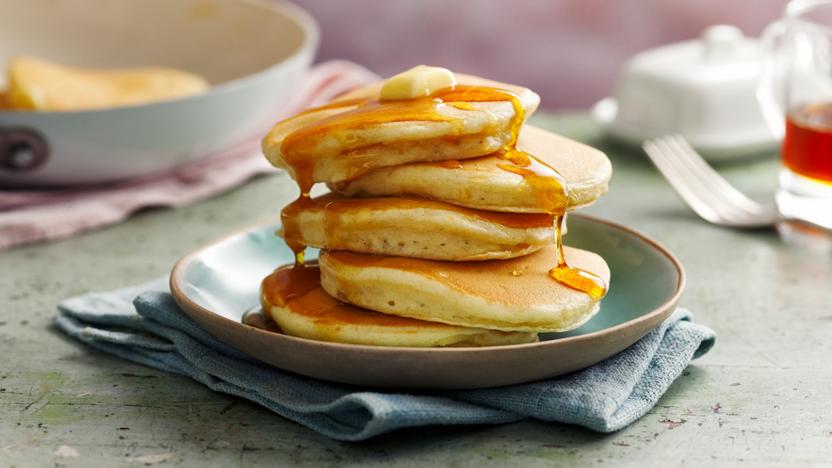 Pancakes are loved the world over. But did you know that there are many variations to this beloved breakfast staple?
Pancakes are loved the world over. But did you know that there are many variations to this beloved breakfast staple?
While the Europeans tend to use plain flour, the Americans use self-raising flour instead—giving it a fluffier texture. Even within Europe itself, there are different styles of pancake, from the thicker British-style to the paper-thin French crêpe or the German pfannkuchen that sits in between!
Bing
If you thought that pancakes were only made sweet, we’ve got a surprise for you.
We quickly enter savory pancake territory with bing. Typically filled with ground meat and cabbage, bing is a popular staple within Chinese cultures. However, the most famous variation is the cong you bing (葱油饼 – literally “scallion oil pancake”), better known as scallion pancakes.
Dosa
 Traveling slightly westward to India, we find another kind of savory pancake — the dosa. While dosas might look similar to crêpes, they’re made from a rice, fenugreek, and black gram batter.
Traveling slightly westward to India, we find another kind of savory pancake — the dosa. While dosas might look similar to crêpes, they’re made from a rice, fenugreek, and black gram batter.
These crispy Indian-style pancakes are typically served with curries, sambar, or chutney and consumed throughout the day. Sometimes, you’ll find dosas with a filling of potatoes (masala dosa), and sometimes they’re made with tomatoes and onions within the batter (uthappam)
Okonomiyaki
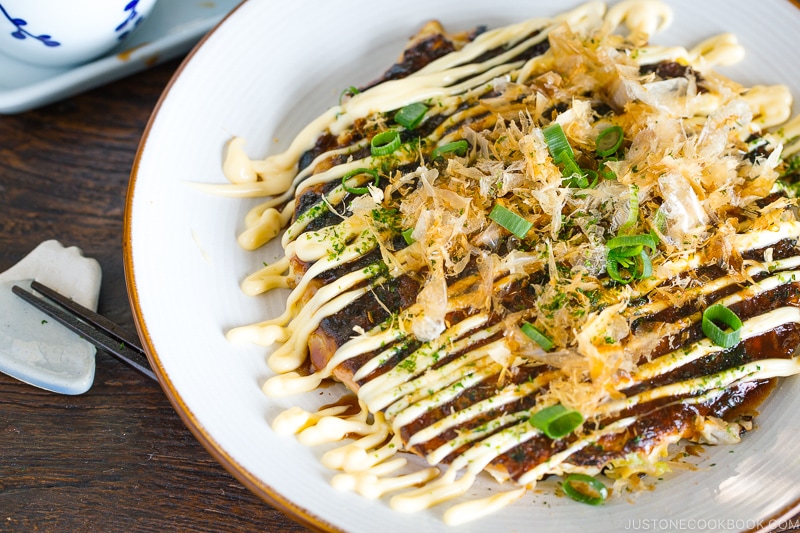
Now, we head over to the land of the rising sun. Okonomiyaki (お好み焼き) is yet another savory-style pancake that’s a staple within Japanese street food culture. Okonomi means “as you like it,” while yaki means “grilled”.
Traditional Osaka-style okonomiyaki is made of flour, eggs, shredded cabbage, and a choice of protein, making this dish highly adaptable according to your tastes, and cooked on a hot grill. Vendors tend to serve these with a sprinkling of nori (Japanese seaweed), Japanese mayo, and bonito flakes.
Hotteok

Right next door, in South Korea, you’ll find hotteok (호떡). These Korean-style pancakes are arguably the most popular street food in the country, and rightly so! There’s nothing better than a piping-hot hotteok while braving the winter colds—and they’re good for a quick energy boost, too!
Although hotteok is generally a dessert dish, you’ll also find some filled with cheese or even japchae—glass noodles—making this one of the most versatile foods on this list.
Apam Balik
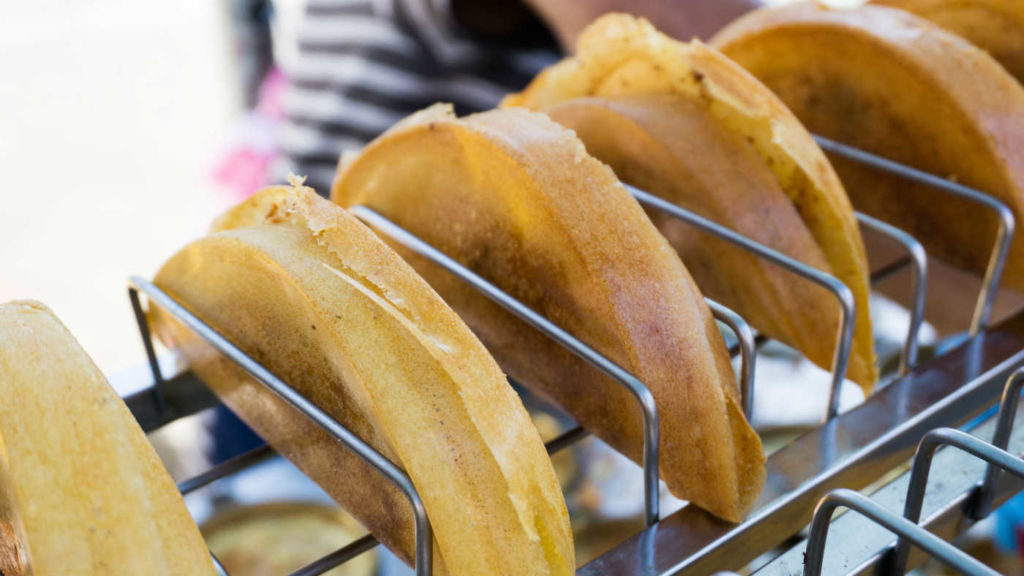
Now over to the southeast of Asia, we find the apam balik. This crispy dessert pancake has roots in Chinese cuisine and is a popular snack in Malaysia, Singapore, Brunei (known as kueh Malaya), and Indonesia (called terang bulan).
Apam balik consists of plain flour, eggs, sugar, baking powder, and milk (sometimes coconut milk) and filled with cream corn and crushed peanuts.
Kartoffelpuffer
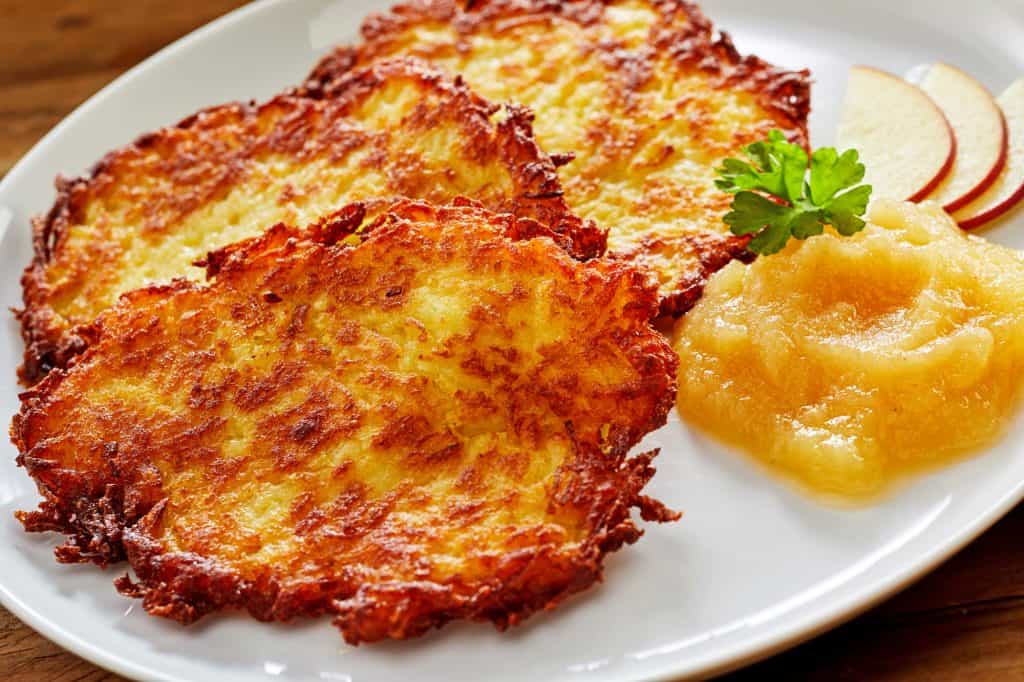
We now go over to the European continent—the first stop: Germany. The kartoffelpuffer is a potato pancake made by grating potatoes and onions and mixing them with flour and eggs. These potato pancakes are either baked or fried in a pan with butter or oil.
Although the kartoffelpuffer seems like a savory dish, Germans typically serve them with sweet toppings like applesauce or sugar. If you’re not into eating potatoes as a sweet dish, you can enjoy kartoffelpuffer with sauerkraut or as a side to your bratwurst.
Pannukakku
Now we’re in the Scandanavian land of Finland and their version of a pancake—pannukakku. The batter for pannukakku is more custard-like compared to most other European pancakes as it’s made with vanilla sugar and is traditionally baked rather than pan-fried.
The baking process makes these Finnish pancakes light and fluffy in the middle with crispy sides—similar to the German “Dutch baby”. The Finnish like to enjoy their pannukakku with jam, fruits, cream, or powdered sugar.
Poffertjes

The Dutch poffertjes throws away the tradition of plain flour and uses buckwheat flour and yeast instead. Poffertjes are also smaller in size and made in their own special pan—the poffertjespan!
Although you might be tempted to eat a mountain of these for breakfast, the Dutch enjoy poffertjes as a snack with melted butter and powdered sugar on top.
Beiju de Tapioca

We end our trip in the South American country of Brazil. Beiju is a crepe-like pancake made with goma de mandioca—hydrated tapioca starch. Depending on your filling of choice, you can eat this Brazilian delicacy either as a savory or sweet dish!
Traditionally, beiju is topped with butter, shredded coconut, or condensed milk as a sweet dish. To turn this into a savory meal, fill it with Brazilian salted dry beef or cold meats!
More From LWOS Life
Make sure to stay tuned to LWOS Life for more on this and other stories from around the world of entertainment, culture and more, as they develop. You can always count on LWOS Life to be on top of the major news in the world of entertainment; whilst also providing you with editorials on everything from beer to movie reviews.
Featured image credit

